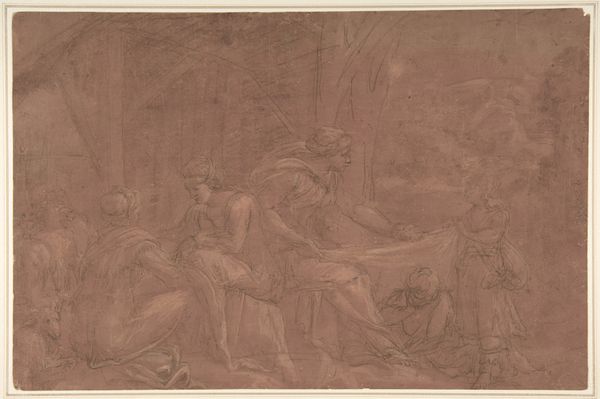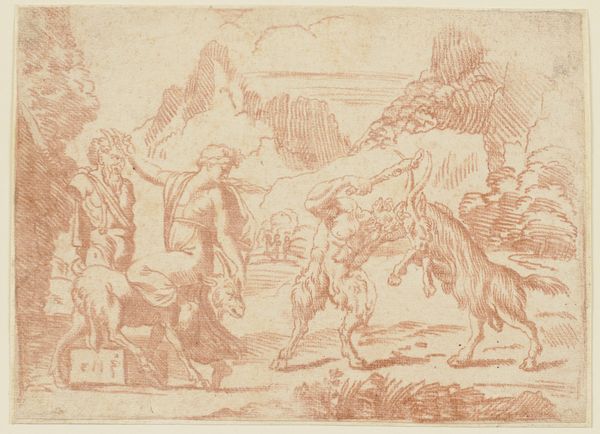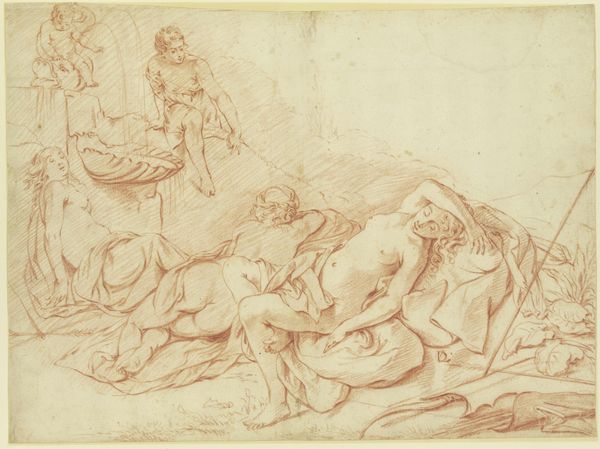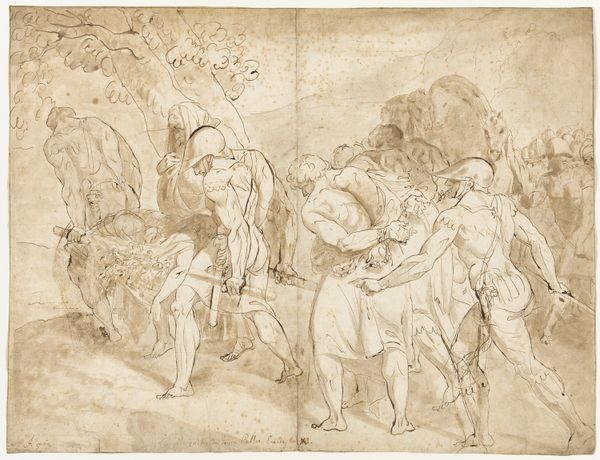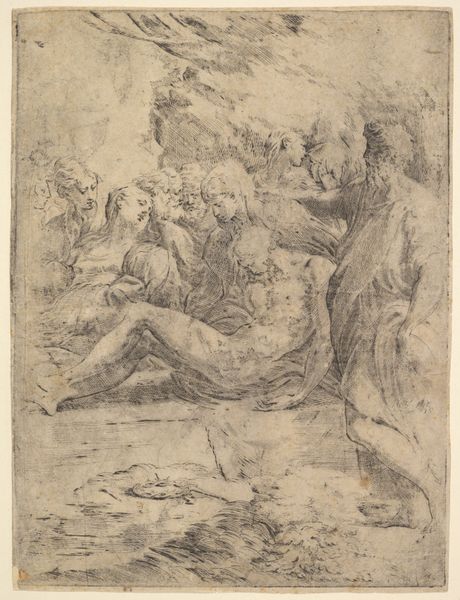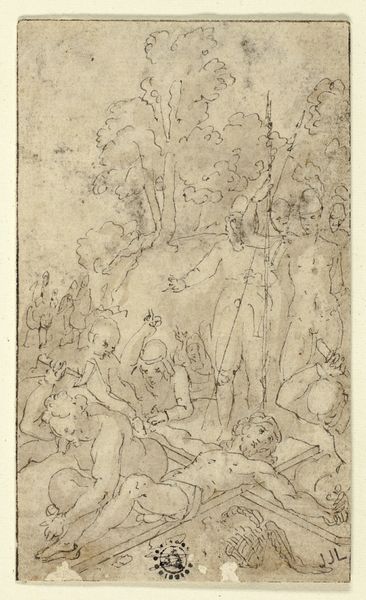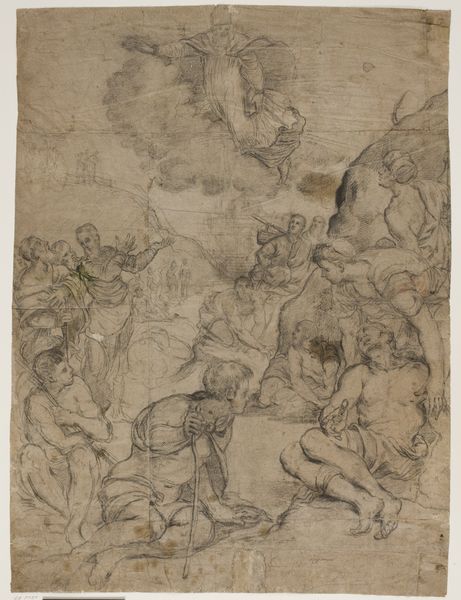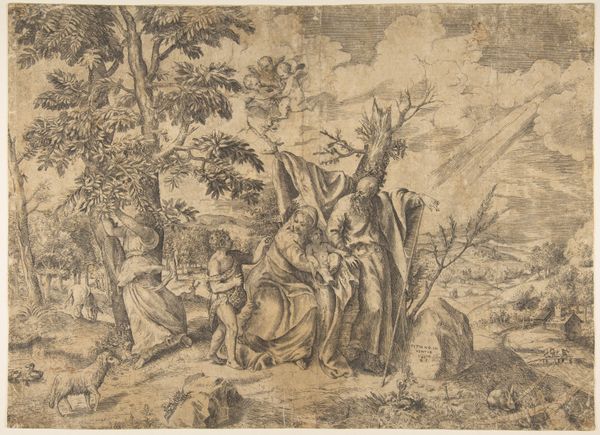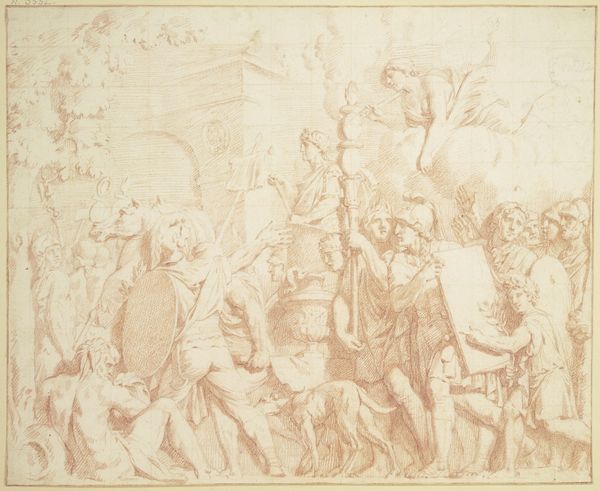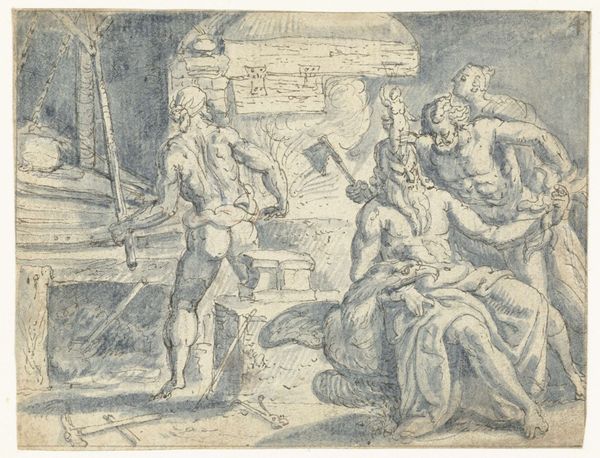
drawing, print, charcoal
#
drawing
#
narrative-art
# print
#
landscape
#
charcoal drawing
#
figuration
#
charcoal
#
italian-renaissance
Dimensions: 5 3/4 x 7 3/16 in. (14.6 x 18.3 cm)
Copyright: Public Domain
Curator: This is a piece known as “St. Jerome in a Landscape,” believed to have been created between 1495 and 1500, employing charcoal. It resides here at the Metropolitan Museum of Art. Editor: Immediately, I see a raw, almost desperate spirituality rendered through this charcoal medium. The landscape, almost violently etched, feels integral to Jerome’s penitence. Curator: Indeed. Consider the materiality here. Charcoal, essentially burnt wood, directly links the artistic process to themes of mortality and spiritual purification central to Jerome’s story. Editor: The placement of Jerome’s figure – kneeling, hands clasped, almost pleading towards the cross – evokes the immense symbolic weight that St. Jerome has accrued over time. His vulnerability is palpable. I find that incredibly moving. Curator: It’s a very interesting choice of material because drawing implies the immediate and charcoal being dry as a medium, is less permanent. It would invite the question of is this process, or the result more important? The narrative gives him a setting to labor with his hands translating text for the bible Editor: That juxtaposition is striking – the supposed permanence of religious doctrine set against the inherent impermanence of the medium. Even the landscape participates, seemingly reflecting Jerome’s internal turmoil in its ruggedness. Curator: Furthermore, you cannot erase the history in drawing or the decisions because there’s always a record of those past decisions still on the material itself. Nothing goes away it just becomes something new in this process. It emphasizes the material realities involved in its creation Editor: Absolutely, the cultural weight. Even his lion seems subdued by his religious devotion, a stark contrast to earlier depictions where he's accompanied by an overtly aggressive or triumphant beast. Curator: To me, this landscape is less a background and more like a workshop space of knowledge and experience that reflects what this means for the biblical writer to reflect on scripture and meaning. Editor: Thinking about it now, I realize this interpretation offers us a rich way of understanding how even the act of devotion involves labor. Curator: The image stays with you long after you’ve viewed it. The textures speak to you about transformation and devotion. Editor: I've come away thinking about how much these early artists invested in established symbolic imagery to make work. It is always worth it to question its lasting resonance.
Comments
No comments
Be the first to comment and join the conversation on the ultimate creative platform.

